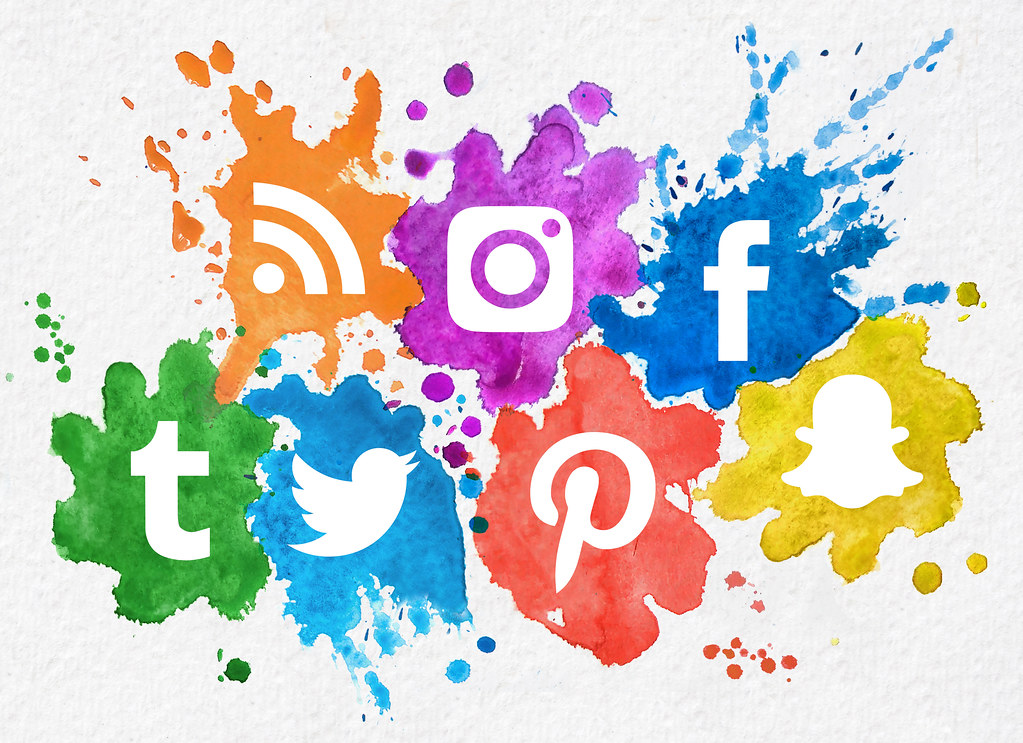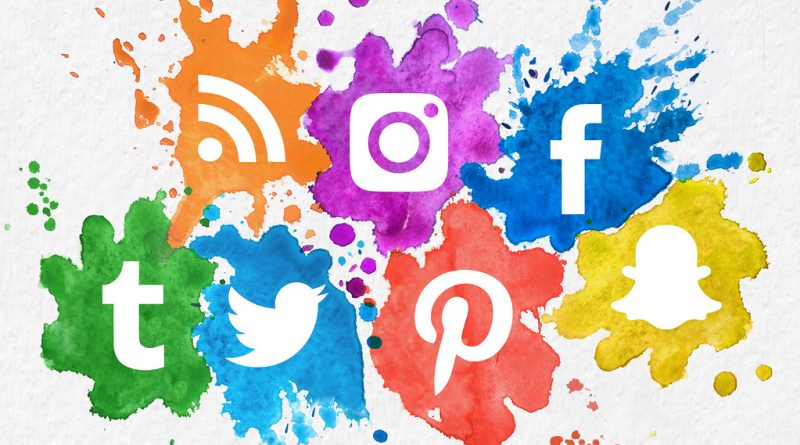A Detailed Guide To Social Media!
Social media marketing (also known as digital marketing and e—marketing) involves using social media platforms—the platforms on which users build social networks and share information—to build a company’s brand, increase sales, and drive website traffic. SMM has purpose-built data analytics that enable marketers to track the success of their efforts and identify even more ways to engage, in addition to providing businesses with a means of engaging with existing customers and reaching new ones.
Social media marketing uses social media and social networks like Facebook, X (formerly Twitter), and Instagram to market products and services, engage with existing customers, and reach new ones. The dramatic growth of interactive digital channels took social media to levels that challenge even the reach of television and radio within 18 years, from 2004 when MySpace became the first social media site to reach one million users to 2022.1 At the beginning of 2023, there were 4.76 billion social media users worldwide, or more than 59% of the world’s population.
The unparalleled capabilities of social media in three fundamental marketing areas are the source of the power of social media marketing. customer data, interaction, and connection.
From promoting content that encourages engagement to extracting personal data that enables messaging to resonate with users, social media marketing has transformed how businesses influence consumer behavior.
Due to their ubiquity, marketing strategies that use social media platforms are crucial to businesses.
Even though it requires ongoing upkeep and may result in unintended negative feedback, social media marketing is frequently more cost-effective when combined with significant exposure.
What exactly makes social media marketing (SMM) so effective?
Social media’s unparalleled capacity in three fundamental marketing areas drives the power of SMM: customer data, interaction, and connection.
Connection
Not only do businesses now have the ability to connect with customers in ways that were previously unimaginable, but there is also a remarkable variety of ways to connect with target audiences through social media platforms like Facebook and YouTube as well as microblogging services like X.
eWOM (electronic word-of-mouth)
eWOM (electronic word-of-mouth) recommendations between existing and potential customers provide businesses with free advertising opportunities because of the dynamic nature of social media interaction—whether through direct communication or passive liking. Not only is the positive contagion effect of eWOM a useful factor in consumer decision-making, but these interactions can also be measured because they take place on the social network. Businesses can, for instance, measure their social equity, which is the ROI of their social media marketing campaigns.
Customer Data
An additional valuable resource to boost marketing outcomes is provided by a well-designed social media marketing strategy: data on customers. SMM tools are able to not only extract customer data but also turn this gold into actionable market analysis—or even use the data to crowdsource new strategies—rather than being overwhelmed by the three Vs of big data—volume, variety, and velocity.
Think about how different age groups might not all have the same access to social media. Using only digital or online marketing may unintentionally exclude some groups of people who don’t have access to the internet.

How Social Media Marketing (SMM) Works
With the rise of platforms like Facebook, X, and Instagram, social media changed how we connect and how businesses can influence consumer behavior. From promoting content that encourages engagement to extract geographic, demographic, and personal information that makes messaging resonate with users, social media has changed how we connect and how businesses can influence consumer behaviour.
SMM Action Plan Your SMM strategy will be more successful if it is more targeted. Social media marketing has several distinct advantages over traditional marketing, including the fact that SMM has two types of interaction that enable targeted customer relationship management (CRM) tools: both firm-to-firm and customer-to-customer. SMM, on the other hand, is able to track customer value both directly (through purchases) and indirectly (through product referrals). In contrast, traditional marketing primarily tracks customer value by capturing purchase activity.
Shareable Content:
Businesses can also turn the increased interconnectedness of SMM into sticky content, which is the marketing term for appealing content that immediately engages customers. They then share the content and make purchases as a result. Creating shareable content is one of the most important ways social media marketing drives growth because it not only reaches an otherwise inaccessible audience but also carries the implicit endorsement of someone the recipient knows and trusts.
Earned Media SMM is also the most effective way for a company to benefit from another type of earned media, which is brand exposure through any method other than paid advertising: product recommendations and reviews written by customers.
Viral Marketing is another SMM strategy that relies on the audience to generate the message. Viral marketing is a sales strategy that tries to get word-of-mouth information about a product to spread quickly. Customer Segmentation Because customer segmentation is much more refined on SMM than on traditional marketing channels, businesses can ensure that they focus their marketing resources on their exact target audiences. Once a marketing message is being shared with the general public far beyond the original target audience, it is considered viral—a very simple and inexpensive way to promote sales.4
Metrics to Monitor:
According to Sprout Social, the following are the most important SMM metrics to monitor:
- Engagement (clicks, likes, comments, and shares)
- Impressions (the number of times a post appears)
- Reach and virality (the number of unique views a SMM post receives)
- Share of voice (the extent to which a brand is heard online)
- References (how a client lands on a site)
- Conversions (when a site visitor makes a purchase).
However, the business is the focus of an additional important metric: response rate/time (how frequently and quickly the company responds to customer messages). When choosing which metrics to track in the sea of data generated by social media, the rule of thumb is to align each business goal with a relevant metric. Use a social media analytics tool that measures the effectiveness of your campaign against that specific target if your business goal is to grow conversions from an SMM campaign by 15% within three months. Even in the digital age, people appreciate the human touch, so don’t rely solely on social media to spread the word.
Benefits and Drawbacks of Social Media Marketing (SMM)
Benefits
Social media marketing has brought about a new set of advantages. Social media platforms offer a powerful means of connecting with and conversing with many people, which can help raise brand recognition and awareness.
Using social media to interact with customers can help strengthen relationships and increase loyalty. It is more appealing to startups and smaller businesses because it is frequently less expensive than traditional advertising strategies.
Additionally, social media marketing has numerous advantages. Sharing links to your blog or website on social media can help get more people to your website and increase sales. Additionally, social media allows you to gather feedback from customers in real time, making it easier to communicate with them and enabling immediate interaction.
Social media marketing also has the advantage of being both comprehensive and focused. Through shares, likes, comments, and other forms of interaction, social media can help businesses reach a larger audience and increase engagement. This is especially true when one considers how frequently customers share content with friends and family members who might not be customers. In contrast, social media platforms provide various targeting options, allowing businesses to target specific demographics, interests, and behaviours with targeted content.
Even though social media marketing has many advantages, it also has some drawbacks and difficulties. Building a strong social media presence takes time and effort, and business owners frequently need to consistently engage with customers and produce content.
Successful social media marketing requires a thorough comprehension of the various platforms and the capacity to produce engaging content, analyze data, and make decisions based on data. Since each platform is often specialized, understanding it is necessary. Additionally, social media platforms frequently alter their policies and algorithms, making predicting and maintaining success challenging.
Social media makes it simple to communicate with customers and gives them a chance to express their concerns and complaints publicly. If handled improperly, this may create a public forum, which can harm a business’s reputation.
Last but not least, it might be challenging to quantify the ROI of social media marketing precisely. Measuring the ROI and effectiveness of social media marketing can be difficult because it often requires tracking multiple metrics, analyzing large data sets, and making assumptions about why customers may have behaved in different ways.
Drawbacks
It may be time-consuming to set up and maintain, unpredictable, as different platforms may change algorithms, result in negative feedback being displayed in a very public fashion, and difficult to fully understand the true ROI.
What Is Sticky Content in Social Media Marketing?
Pros
It may help businesses easily enhance brand recognition. It offers companies more cost-effective solutions with great exposure.
The term “sticky content” comes from marketing and refers to appealing content that piques potential customers’ interest and encourages them to purchase and share the content.
In social media marketing, what exactly is viral marketing?
A social media marketing (SMM) strategy known as viral marketing aims to encourage the rapid dissemination of product information through word-of-mouth.
How Does Social Media Marketing Use Earned Media?
Earned media is a marketing term for brand exposure obtained through any method other than paid advertising. Examples of earned media include customer-generated content such as product reviews and recommendations, shares, reposts, and mentions.
What are some examples of marketing strategies for social media?
Various methods and strategies for engaging users and marketing goods and services through social media marketing exist. These are just a few examples of interactive chatbots, audience-targeted advertising, personalized online experiences for customers, social media influencers, and growing an online audience.
The Bottom Line
Social media marketing (SMM) builds brands, boosts sales, and drives website traffic by interacting with customers through social media platforms. As social media usage grows worldwide on computers and mobile devices, the ability to generate sales from specific user populations is becoming increasingly competitive for views and clicks.
